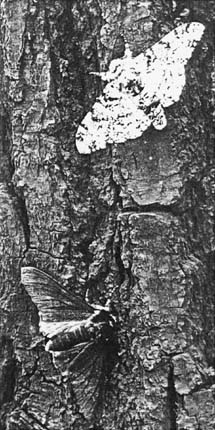|
There are more active forms of protection from the environment: avoidance and flight, and active defense. These measures require the ability to detect danger (sensory mechanisms), and to take appropriate action (motor mechanisms). It takes a little reflection to see that growing a shell, overbreeding, running away, and fighting all are comparable responses to the same challenge: defense against a hostile environment and maintenance of the species, if not the individual. These same sensory and motor mechanisms, once developed, are useful in seeking needed chemicals or environments. Plants grow toward the light, and extend roots toward moisture and food. Animals detect food supplies and move to collect them. All of these sensory and motor systems are chemical. They can be simple: the detection of chemical gradients by bacteria, and movement in response to the gradient. They also can be quite elaborate, as in the rhodopsin trigger for light detection and the subsequent nerve impulse to an information processor such as the brain. Whether active or passive, all life forms use their surroundings, and all life forms by one means or another try to make sure that their surroundings do not use them. Right: The soot-blackened barks of trees of the industrial midlands of England give the dark form of the peppered moth a better chance of survival. Even in prepollution populations of the peppered moth there were some of the dark variety, because the copying of DNA from one generation to another is imperfect, and variations creep in. The dark variety came into its own when man changed the moth's natural environment. This slightly imperfect reproduction, followed by selection, is an important characteristic of living organisms. Courtesy Dr. H. B. D. Kettlewell. |

|